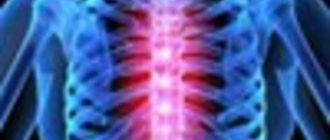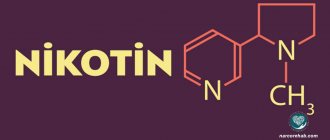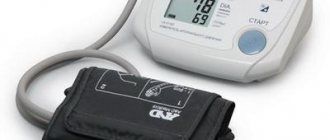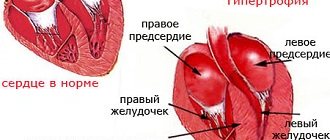Adrenaline is a hormone, biologically active substance, neurotransmitter, which is produced in the body of living beings, including humans, in the adrenal cortex. This hormone is formed from the amino acid tyrosine, which enters the body during the breakdown of protein foods. The second name for this biologically active substance is epinephrine (translated as “near the kidney” or “above the kidney”). It is called differently in different countries. In America it is known as epinephrine, in Russia - as adrenaline. However, the receptors on which adrenaline acts are called adrenergic receptors, and they are present in all organs and tissues of our body.
Receptors are divided into α-adrenergic receptors and β-adrenergic receptors; α-receptors, in turn, are divided into α1- and α2-adrenergic receptors. This kind of division is necessary in order to understand what effect produced adrenaline has on the body.
When is adrenaline released?
Adrenaline is produced in cases of stress, trauma, burns, shock, physical exertion, and emotional shocks. Its development is an adaptation process to the current situation. For example, during painful shock, thanks to adrenaline, a person does not fully feel pain. Otherwise, death would have occurred from the pain reaction.
Adrenaline is produced in order to make the body faster and stronger. In other words, this hormone mobilizes all the forces of the body.
Any living organism in nature has protective functions, one of which is called “fight or flight”. That is, the animal protective instinct is triggered during times of stress, when it is necessary to either defend or run away. This is a physiological process that occurs regardless of our desires.
Thanks to adrenaline, your mood and desire to carry out your plans increase.
Interesting fact!
For each person, the level of adrenaline is purely individual. There are people for whom this bar is quite high, and in order to keep it, they need to go to the mountains, play in casinos, and engage in extreme sports. The effect of adrenaline after the release lasts no more than five minutes, because the processes of its inactivation are activated. When the hormone level drops, apathy and depression occur. Therefore, active people need to replenish it again and again. For others, the level of this hormone is quite low, and they are satisfied with absolutely passive types of relaxation: sofa, TV, reading books. It depends on the individual characteristics of a person’s character, his temperament, hereditary factors, etc. We are all individual.
Causes of Low Adrenaline Levels
The causes listed in this chapter are usually related to low adrenaline levels. Work with your doctor or other health care provider for an accurate diagnosis.
Addison's disease
Addison's disease is caused by damage to the adrenal gland by immune complexes, causing the organ to fail to produce enough hormones. This condition leads to a decrease in the level of many hormones, including adrenaline. Symptoms of this disease may include fatigue, muscle weakness, and darkening of the skin. ()
In a study of 19 people, patients with Addison's syndrome showed on average less than 50% the adrenaline levels of people who did not have the disease. ()
The development of adrenal fatigue occurs when the production of hormones, such as adrenaline, is insufficient.
Adrenocorticotropic hormone (ACTH) deficiency
Adrenocorticotropic hormone (ACTH) deficiency is another condition that prevents the adrenal glands from producing enough adrenaline and other hormones. This can lead to symptoms such as fatigue, muscle pain and weight loss. ()
ACTH is usually responsible for stimulating the adrenal glands to release hormones. With a deficiency of this substance, the problematic pituitary gland does not produce enough ACTH. ()
A study of 43 children found that those who were ACTH deficient had only 10-20% of normal adrenaline levels . Another study of adults with ACTH deficiency also found significantly lower levels of urinary epinephrine. (, )
Dopamine beta-hydroxylase deficiency
Dopamine beta-hydroxylase deficiency is a very rare genetic disorder that makes a person unable to produce any epinephrine or norepinephrine . ()
This condition is caused by mutations in the DBH gene and can lead to a variety of symptoms, including low blood pressure, sexual dysfunction and drooping eyelids. ()
Kidney dysfunction
Kidney damage can affect the level of adrenaline in your urine. One study examined catecholamine levels in patients with kidney damage due to diabetes (diabetic nephropathy). Scientists found that these patients had significantly reduced urinary adrenaline . ()
Metabolic syndrome
A person is diagnosed with metabolic syndrome (MS) when they have some combination of obesity, high blood pressure, elevated blood glucose values, and high cholesterol. ()
In a study of 577 people, people with metabolic syndrome had lower levels of urinary epinephrine . Patients with more severe symptoms of metabolic syndrome had the lowest adrenaline levels. ()
Alzheimer's disease
Damage to the hippocampus region of the brain is one of the early signs of Alzheimer's disease. This area of the brain also helps control catecholamine levels in the body.
According to one study of 115 patients, people with Alzheimer's dementia had the lowest levels of adrenaline. ()
Treatment of Parkinson's disease
Parkinson's disease is characterized by the destruction of dopamine neurons in parts of the brain. The production of catecholamines such as adrenaline may also be impaired. ()
A study of 83 patients with Parkinson's disease found that such people had higher levels of adrenaline in their urine. However, adrenaline increased only in people aged 50-60 years. After taking the dopamine drug (Levodopa), hormone levels decreased. ()
Other studies have confirmed that Levodopa reduces urinary epinephrine values , but they have not found changes in epinephrine levels in untreated patients. Thus, Parkinson's disease most likely does not affect adrenaline, but Levodopa does. ()
Physiological effect of adrenaline on the body
Adrenaline constricts blood vessels in the skin, abdominal cavity and mucous membranes. At the same time, it dilates the blood vessels of the heart and brain. Slightly dilates the blood vessels of skeletal muscles. Thus, a redistribution of blood occurs in the body, as a result of which more blood “comes” to the brain, heart and skeletal muscles than in a normal situation.
Interesting fact!
The expression “fear has big eyes” is nothing more than a manifestation of the physiological effect of adrenaline. This hormone, acting on the radial muscle of the iris, dilates the pupil of the eye.
Symptoms of hormonal imbalance
There are a great many symptoms of malfunction of the endocrine glands, among them are:
- Irregular or absent menstruation in women;
- Miscarriage or infertility;
- Loss of sexual desire;
- Increase in body weight;
- Rashes on the body, acne;
- Deterioration of hair and nails;
- Sleep disturbances, lethargy, increased fatigue;
- Emotional instability: tearfulness, short temper, nervousness;
- The development of osteoporosis is a disease that leads to bone fragility.
It is worth noting that none of the above symptoms is a direct confirmation of the presence of a hormonal imbalance, but only a possible consequence. To make an accurate diagnosis, it is necessary to undergo a full examination by an endocrinologist, which includes a functional diagnostic method (ultrasound, MRI), as well as laboratory blood tests, which will be discussed below.
Physiological response of the heart to the release of adrenaline
The effect of adrenaline on the heart is quite complex and occurs in several stages.
This occurs due to the presence of several types of receptors that perceive adrenaline.
First, the heart rate and cardiac output increase significantly, causing blood pressure to rise. At the second stage, a decrease in the number of heart contractions is observed, due to stimulation of the vagus nerve, while blood pressure temporarily stops rising. In the third stage, cardiac output increases, the number of heartbeats increases, and blood pressure levels rise. At the fourth stage, tachycardia remains, but blood pressure decreases.
With the regular release of adrenaline, there is constant stimulation of the cardiovascular system. As a result, functional myocardial hypertrophy is observed. The heart, in order to cope with the constant load, increases its muscle mass.
Negative effects of excess adrenaline
With constant or frequent release of adrenaline by the adrenal glands, they become depleted and the adrenal system as a whole is depleted. A person becomes lethargic, apathetic, weak, lacking initiative, and depressed.
An excess amount of adrenaline in the blood is observed with constant stimulation of the sympathetic nervous system: during chronic stress, during constant anxiety, fear. With excessive and frequent production of adrenaline, so-called panic attacks can occur. This is a functional state of the body in which the level of adaptive capabilities is significantly less than the level of adrenaline.
Symptoms of panic attacks:
- irrational fear of death;
- tachycardia, arrhythmia;
- pain in the heart area;
- a sharp increase in blood pressure;
- cold clammy sweat;
- dizziness;
- fainting state;
- tremor of limbs, convulsions;
- increasing shortness of breath, suffocation;
- sudden changes in body temperature;
- dry mouth.
In another way, this condition is called sympathoadrenal or vegetative crisis, vegetative storm, vegetative neurosis with a crisis course, etc. This condition is not organic. Although it is very unpleasant and painful for patients, it is absolutely functional. If the adrenaline rush continues, panic attacks will recur. This condition is treated and monitored by psychotherapists and psychiatrists together with specialized specialists. And the treatment of such patients is aimed precisely at eliminating the cause, that is, at stopping or reducing the release and effect of adrenaline on the body.
Such conditions are also observed in athletes. This may be due to excessive physical and psychological stress. This is especially true before serious competitions, when the athlete bears great responsibility. A person feels constant tension, and the body can respond to such stress with vegetative storms.
Neurotransmitter exchange
Neurotransmitter exchange
Neurotransmitters
are biologically active chemical substances through which electrical impulses are transmitted from a nerve cell
Catecholamines influence the most important processes in the human body: mood level, activity and performance, speed of thinking, ability to remember information and reproduce it, level of aggression and sexual behavior. They adapt the body to stress: the sympathoadrenal system is activated already in preparation for physical activity and helps to more easily endure changes in the internal environment.
The level of catecholamines is highest in children, so they have no problems with activity, memory, quickly switching from one activity to another, and their mood is most often good. With age, the synthesis of these substances slows down, and the older a person gets, the worse his mood, lower performance and higher susceptibility to depression.
Disturbances in the synthesis of catecholamines and their perception by the body lead to serious health problems: arterial hypertension, severe depressive states, and in old age – Parkinson’s disease. Disturbances in the functioning of the sympathoadrenal system explain the development of schizophrenia and cravings for intoxicating substances - alcohol, tobacco, and drugs.
Catecholamines interact with special receptors on the cell surface, which are called adrenergic receptors and are divided into two types: α- and β-adrenergic receptors. Stimulation of α-adrenergic receptors causes constriction of blood vessels, spleen, dilation of pupils, etc. Excitation of β-adrenergic receptors causes vasodilation, relaxation of the bronchi, increased heart rate, etc.
Adrenalin:
A hormone synthesized by chromaffin cells of the adrenal medulla. The effect of adrenaline is associated with the effect on α- and β-adrenergic receptors and largely coincides with the effects of excitation of sympathetic nerve fibers.
The action of adrenaline increases heart rate, increases blood pressure, reduces blood flow to internal organs, increases blood flow to skeletal muscles, increases blood glucose levels, causes the liver and muscle cells to break down glycogen and produce glucose, etc.
Adrenaline has a stimulating effect on the central nervous system, although it poorly penetrates the blood-brain barrier. It increases the level of wakefulness, mental energy and activity, causes mental mobilization, an orientation reaction and a feeling of anxiety, restlessness or tension, generated during strong excitement or heavy physical exertion. It is called the “fear hormone”.
Adrenaline also has a pronounced anti-allergic and anti-inflammatory effect, inhibits the release of histamine, serotonin, kinins and other mediators of allergy and inflammation from mast cells, and reduces the sensitivity of tissues to these substances.
Adrenaline causes an increase in the number of leukocytes in the blood.
Adrenaline also causes an increase in the number and functional activity of platelets, which, along with spasm of small capillaries, causes the hemostatic (hemostatic) effect of adrenaline.
Norepinephrine:
It is a catecholamine, which is produced predominantly by postganglionic cells of the sympathetic nervous system and, to a lesser extent, by cells of the adrenal medulla, a mediator of the autonomic nervous system, acting directly in the area of the presynaptic ending. It is one of the most important neurotransmitters in the brain. It is a precursor to adrenaline. Also known as the “rage hormone.”
Norepinephrine is a neurotransmitter of both the locus coeruleus of the brain stem and the endings of the sympathetic nervous system. The number of noradrenergic neurons in the central nervous system is small (several thousand), but they have a very wide field of innervation in the brain.
The action of norepinephrine is associated with a predominant effect on α-adrenergic receptors. Norepinephrine differs from adrenaline in having a much stronger vasoconstrictor and pressor effect, a much smaller stimulating effect on heart contractions, a weak effect on the smooth muscles of the bronchi and intestines, and a weak effect on metabolism. Norepinephrine increases the need for oxygen in the myocardium and other tissues to a lesser extent than adrenaline.
Norepinephrine takes part in the regulation of blood pressure and peripheral vascular resistance. The cardiotropic effect of norepinephrine is associated with its stimulating effect on β-adrenergic receptors of the heart.
Dopamine:
A neurotransmitter synthesized in chromaffin cells of specific brain structures, as well as a hormone produced by the adrenal medulla and other tissues (for example, kidneys). Dopamine is a precursor to norepinephrine and adrenaline in their biosynthesis.
Dopamine is one of the chemical factors of internal reinforcement (ERF). It is released during pleasure and even during the anticipation stage. Like most of these factors, dopamine has narcotic analogues, for example, amphetamine, ecstasy, ephedrine.
In the extrapyramidal system, dopamine plays the role of a stimulating neurotransmitter, helping to increase motor activity, reduce motor retardation and stiffness, and reduce muscle hypertonicity. The physiological antagonists of dopamine in the extrapyramidal system are acetylcholine and GABA. In the hypothalamus and pituitary gland, dopamine plays the role of a natural inhibitory neurotransmitter, inhibiting the secretion of a number of hormones.
Dopamine causes an increase in peripheral vascular resistance. It increases systolic blood pressure. Dopamine also increases the force of heart contractions. Cardiac output increases. The heart rate increases, but not as much as under the influence of adrenaline. Myocardial oxygen demand increases under the influence of dopamine.
Dopamine reduces renal vascular resistance, increases blood flow and renal filtration. However, in high concentrations it can cause constriction of renal vessels. It also reduces the rate of aldosterone synthesis in the adrenal cortex, reduces the secretion of renin by the kidneys, and increases the secretion of prostaglandins by kidney tissue.
Dopamine inhibits peristalsis (wave-like muscle contraction) of the stomach and intestines. In the central nervous system, dopamine stimulates the chemoreceptors of the trigger zone and the vomiting center and thereby takes part in the act of vomiting.
Indolamines.
Serotonin:
5-hydroxytryptamine, 5-HT, is an important neurotransmitter and hormone. According to its chemical structure, serotonin belongs to the biogenic amines, a class of tryptamines.
Serotonin plays the role of a neurotransmitter in the central nervous system. Serotonergic neurons are grouped in the brain stem: in the pons and raphe nuclei. From the pons there are descending projections to the spinal cord, neurons of the raphe nuclei give ascending projections to the cerebellum, limbic system, basal ganglia, and cortex. Serotonin, along with dopamine, plays an important role in the mechanisms regulating the hormonal function of the pituitary gland. Stimulation of the serotonergic pathways connecting the hypothalamus with the pituitary gland causes an increase in the secretion of prolactin and some other hormones of the anterior pituitary gland. Serotonin is involved in the regulation of vascular tone.
Serotonin affects a person's muscle tone, reaction speed and mood. Low serotonin levels can lead to depression. Pain sensations also depend on serotonin - if its level is low, even a slight bruise will be painful.
Serotonin plays an important role in blood clotting processes. Serotonin increases the functional activity of platelets and their tendency to aggregation and blood clot formation.
Serotonin is involved in the processes of allergy and inflammation. It increases vascular permeability, enhances chemotaxis and migration of leukocytes to the site of inflammation, increases the content of eosinophils in the blood, enhances degranulation of mast cells and the release of other mediators of allergy and inflammation. Serotonin, along with histamine and prostaglandins, irritating receptors in tissues, plays a role in the occurrence of pain impulses from the site of damage or inflammation.
Large amounts of serotonin are also produced in the intestines. Serotonin plays an important role in the regulation of motility and secretion in the gastrointestinal tract, enhancing its peristalsis and secretory activity.
Their metabolic products play a great role in diagnosing the level of excretion of catecholamines and serotonin.
Metabolism products of catecholamines and serotonin.
- Metanephrine, normetanephrine - and intermediate metabolites of adrenaline and norepinephrine.
Vanillylmandelic acid (VMA) is the main metabolite of adrenaline and norepinephrine.
Homovanillic acid (HVA) is the main metabolite of dopamine.
-5-hydroxyindoleacetic acid (5-HIAA) is the main metabolite of serotonin.
Delayed metabolites reflect the fact of increased production of catecholamines and their increased metabolism. Determined in daily urine.
Diagnostic value of determining the level of endogenous catecholamines, serotonin and their metabolites.
Oncology.
n Pheochromocytoma
Pheochromocytoma: a hormonally active tumor (usually benign, less often malignant) of the adrenal medulla or chromaffin tissue outside the adrenal glands (paraganglioma, ganglioneuroma, neuroblastoma). In 75% of cases, pheochromocytoma is located in one of the adrenal glands, more often in the right. In 10% of cases, the tumor can be detected in both adrenal glands. The remaining 15% of tumors are located outside the adrenal glands. In 10-20% of cases, examination of the tumor can reveal histological signs of malignant growth.
Typically, pheochromocytoma secretes both epinephrine and norepinephrine, but predominantly norepinephrine. Some tumors secrete only norepinephrine or (less commonly) only epinephrine. Very rarely, the predominant catecholamine is dopamine. In addition to catecholamines, pheochromocytoma can produce serotonin, ACTH, somatostatin, opioid peptides, calcitonin, neuropeptide Y (a strong vasoconstrictor), etc.
Clinical manifestations.
Complaints: headache, palpitations, irritability, weight loss, chest or abdominal pain, nausea, vomiting, weakness and fatigue.
Objective signs:
Changes in blood pressure (in 98% of patients), persistent arterial hypertension, hypertensive crises (may be replaced by arterial hypotension), orthostatic hypotension, increased blood pressure after minor physical activity (for example, after eating or defecation) or physical examination (for example, after palpation of the abdomen ), a paradoxical increase in blood pressure in response to some antihypertensive drugs, a sharp increase in blood pressure during general anesthesia.
Other signs of excess catecholamines: Sweating, tachycardia, arrhythmia, reflex bradycardia, increased apical impulse, pallor of the skin of the face and torso, agitation, anxiety, fear, hypertensive retinopathy, dilated pupils. Very rarely - exophthalmos, lacrimation, pallor or hyperemia of the sclera (red eyes), lack of pupillary response to light, tremor, Raynaud's syndrome or marbling of the skin; in children, sometimes there is swelling and cyanosis of the hands; wet, cold, clammy and pale skin on the hands and feet; “goose bumps”, cyanosis of the nail beds.
Complications of pheochromocytoma:
-Myocardial infarction
-Heart failure
-Arrhythmia
-Tachycardia
-Falling blood pressure or circulatory arrest during induction of general anesthesia
-Shock
- Cerebrovascular accident
-Kidney failure
-Hypertensive encephalopathy
-Ischemic colitis
-Dissecting aortic aneurysm
-In pregnant women: fever, eclampsia, shock, maternal or fetal death
-and etc.
In patients with pheochromocytoma, the concentration of catecholamines in the blood increases 10-100 times.
Wherein:
- Pheochromocytomas of adrenal origin: an increase in the level of both adrenaline and norepinephrine, as well as their intermediate and final metabolites.
- Extra-adrenal tumors (paraganglioma, ganglioneuroma, neuroblastoma, etc.): usually only the content of norepinephrine and normetanephrine increases.
Studying the level of catecholamines over time allows not only to diagnose pheochromacytoma, but also to monitor the effectiveness of the therapy:
-Radical tumor removal: always accompanied by rapid normalization of parameters,
-Recurrence of the process: leads to a repeated increase in the concentration of catecholamines in the blood.
When studying catecholamines, it is informative not only to determine their level in the blood plasma, but also their excretion in the urine, as well as the determination of catecholamine metabolites in the urine. However, it should be noted that each method has its own disadvantages:
For example, catecholamines are eliminated quite quickly in the blood, and ideally, blood collection for this study should be done at the time of significant clinical manifestations (hypertensive crisis, etc.), which is not always feasible in practice.
Determination of catecholamines and their metabolites in urine may not be sufficiently informative if the patient has impaired renal function.
Therefore, the most optimal is to study adrenaline, norepinephrine and their intermediate metabolites (metanephrine, normetanephrine) in the blood with simultaneous determination of the excretion of catecholamines and their final metabolites (VMA) in the urine.
Diagnostic value of serotonin level in oncology:
About 90% of serotonin is synthesized and stored in enterochromaffin cells of the gastrointestinal tract, from where it enters the blood and is adsorbed by platelets, causing their aggregation. Serotonin has a significant effect on the endocrine system, affecting both the synthesis of hypothalamic factors and the functioning of peripheral endocrine glands.
In clinical practice:
Determining the level of serotonin in the blood is most informative for malignant neoplasms of the stomach, intestines and lungs, in which this indicator exceeds the norm by 5-10 times. In this case, an increased content of serotonin metabolic products is detected in the urine. After radical surgical treatment of the tumor: complete normalization of these indicators occurs, and therefore the study of the level of serotonin in the blood and in daily urine over time allows us to evaluate the effectiveness of the therapy.
Relapse of the process or metastasis: repeated increase in the level of serotonin in the blood and the release of metabolites in the urine. Serotonin and 5-HIAA are markers of malignancy.
Other possible causes of increased serotonin concentrations in the blood and urine are medullary thyroid cancer, acute intestinal obstruction, dumping syndrome, cystic fibrosis, and acute myocardial infarction.
Cardiology.
Arterial hypertension.
The sympathetic part of the ANS is the most important system for regulating systemic blood pressure. Refers to short-term mechanisms for regulating blood pressure. The importance of the VNS is also determined by the fact that it immediately affects 2 parameters that determine the value of blood pressure - the strength of heart contractions, that is, the pumping function of the heart, and the tone of resistive peripheral vessels.
Physiological effect of catecholamines on the cardiovascular system.
| The main reasons for increased levels of adrenaline and nor-adrenaline | The main reasons for the decrease in adrenaline and nor-adrenaline levels | ||
| in blood | in urine | in blood | in urine |
| pheochromacytoma; -hypertensive crisis; -stress; -neuroblastoma; -ganglioneuroma; -hypoglycemia; -acute myocardial infarction; -taking caffeine, ethanol, theophylline, reserpine, administering insulin, cortisone | - pheochromacytoma - hypertensive crises, except diencephalic ones; — neuro- and ganglioneuroblastoma; - long-term manic-depressive states; -acute period of myocardial infarction; - any diseases that occur with severe pain; -stress; -after administration of insulin, ACTH, cortisone; | - clonidine therapy. Insufficient secretion of adrenaline and norepinephrine does not occur as an independent endocrine pathology. | -autonomic neuropathies, including diabetic; - parkinsonism; - collagenoses; - acute leukemia (especially in children due to degeneration of chromaffin tissue); -hypertensive crises associated with damage to the diencephalic region; |
Diagnostic value of the level of catecholamines and their metabolites. Inadequate long-term hypercatecholaminemia or hypocatecholaminemia, caused by impaired synthesis, secretion, inactivation or excretion of catecholamines, as well as changes in the sensitivity of tissue adrenoreceptors to individual catecholamines lead to disruption of the physiological balance of factors that form blood pressure, the development of persistent pathological hyper- or hypotensive conditions.
Long-term hypercatecholaminemia is especially dangerous; as a result of increased production or activity (for example, due to a genetic defect in the receptor apparatus) of catecholamines, persistent arterial hypertension develops, characterized by a crisis course, myocardial hypertrophy with subsequent myogenic dilatation. The causes of these pathological conditions:
Catecholamines stimulate spasm of subcutaneous and visceral vessels, mucous membranes and kidneys by interacting with a-adrenergic receptors, thereby increasing total peripheral resistance (TPR)
The effect of catecholamines on the cardiac muscle (mediated through b1-adrenergic receptors) leads to an increase in heart rate, increased myocardial contractility and an increase in the speed of excitation.
Catecholamines also increase cardiac output by stimulating venoconstriction, increasing venous return and the force of atrial contraction, thereby causing an increase in diastolic volume and, consequently, fiber length.
With an increase in blood pressure in the system of the afferent arteries of the kidneys, the filtration capacity of the glomeruli changes, the mechanism of the renin-angiotensin-aldosterone system (RAAS) is activated, as a result the volume of circulating blood increases, and one of the products (angiotensin II) has a direct vasoconstrictor effect.
Psychoneurology.
Monoamines and indolylalkylamines are a very important class of neuromodulators.
Dopamine is an inhibitory modulator that reduces the effects of the excitatory neurotransmitter acetylcholine. promotes both increased mood and emotional satisfaction, and non-standard brain activity (including, probably, creative activity).
Norepinephrine - causes the accumulation of Ca 2+ ions in the cell (via α1-adrenergic receptors) and cAMP (via β-adrenergic receptors). The reticular formation of the trunk is activated, which tones the brain, including the cerebral cortex. It stimulates memory, purposeful behavior, emotions and thinking. The introduction of substances that reduce the accumulation of KA in nerve cells (reserpine) sharply reduces brain activity. Norepinephrine is released from sympathetic nerve endings into the synapse and then into the blood during anger, rage, and psychological mobilization
Serotonin - reduces aggression, fear, depression, stimulates eating behavior, sleep, increases food and reduces pain conditioned reflexes, promotes learning and leadership.
Parkinsonism, extrapyramidal hyperkinesis:
Parkinsonism (Parkinson's disease) is a chronic progressive neurodegenerative syndrome characterized by movement disorders such as hypokinesia, tremor and muscle rigidity; disorders of autonomic regulation and mental activity due to lesions of the extrapyramidal system. The incidence of parkinsonism increases with age.
In modern ideas about the pathophysiology of parkinsonism:
nthe main role is played by the degeneration of dopaminergic neurons of the compact zone of the substantia nigra,
n to a lesser extent – noradrenergic neurons of the locus coeruleus.
The compact zone of the substantia nigra sends its projections to the striatum, which is the integral center of the stereotypical motor reflex of muscles and regulates movement, muscle tone and walking. Dopamine is the primary inhibitory neurotransmitter in the striatum. Changing dopamine concentrations has functional effects on other neurotransmitters.
Diagnosis of parkinsonism:
Determination of the content of the main metabolite of dopamine - homovanillic acid (HVA). In parkinsonism, it is significantly reduced.
In case of extrapyramidal hyperkinesis, determination of the main metabolites of dopamine and norepinephrine, homovanillic acid (HVA) and vanillylmandelic acid (VMA), an intermediate metabolite of norepinephrine - normetanephrine.
Depressive states.
Depression, according to WHO, is currently one of the most common psychopathological disorders. The clinical picture of depressive syndrome is characterized by a main triad of symptoms: known for many years: low, depressed mood, ideation and motor retardation.
The genesis of affective disorders is determined by the pathological functioning of brain structures, in particular the limbic-thalamic and hypothalamic-pituitary. In this case, the limbic system is the main coordinator, forming an integrative circuit through which the cortical centers for the regulation of emotions send impulses to the hypothalamus, and hypothalamic impulses are transmitted to the hippocampus.
One of the leading neurochemical mechanisms for the formation of depression is the depletion of the catecholamine neurotransmitter system. In addition, the formation of affective disorders is caused by an imbalance (hypo-, hyper- or dysfunction) of interactions between the noradrenergic, serotonergic, and peptidergic systems.
Metabolites of catecholamines and serotonin have diagnostic value for identifying the causes of the development of a depressive state, as well as assessing the therapy:
VMA (vanillyl mandelic acid) the main metabolite of adrenaline and norepinephrine
5-HIAA (5-hydroxyindoleacetic acid) is the main metabolite of serotonin
The level of serotonin in blood plasma can provide reliable information regarding the level of the active transmitter in the synaptic cleft of central synapses.
It is important to note that treatment with antidepressants and antipsychotics should be carried out under the supervision of a physician and according to the characteristics of each individual organism. Therefore, it is necessary to qualitatively identify the pathogenetic variant and conduct therapeutic drug monitoring.
Epilepsy, epileptic syndrome.
Repeated convulsive (more often) or non-convulsive seizures that occur during actively ongoing cerebral pathological processes (tumor, traumatic brain injury, neuroinfection, vascular pathology, metabolic disorders, etc.) or with their pronounced consequences. Seizures usually stop after the neurological pathology is eliminated.
nIn the process of central nervous regulation of autonomic functions, the degree of participation of catecholamines and serotonin becomes of great importance. Being both hormones and mediators of the sympathetic-adrenal system, catecholamines are involved in the development of adaptive reactions of the body.
nThere is some relationship between the nature of the seizure and the level of catecholamine excretion in the urine. Typically, a grand mal seizure is preceded (per day) by increased excretion of norepinephrine, its metabolite. With frequent grand mal seizures, there is a decrease in the excretion of catecholamines, which indicates some functional depletion of the sympathetic-adrenal system.
Determining the level of catecholamines, serotonin and their metabolites in the urine is of diagnostic importance.
Schizophrenia.
Schizophrenia is a brain disease that impairs a person's ability to think properly, control their emotions, make decisions, and communicate with others.
Among the biological theories of schizophrenia, neurotransmitter theories, especially dopamine, are currently the most widely accepted.
Dopamine Theory: In this disease, there is an increase in the activity of the brain's dopamine system with increased dopamine release, increased dopamine neurotransmission and hypersensitivity of dopamine receptors, i.e. it is assumed that dopamine neurons are in a hyperactive state.
Serotonin theory: the development of schizophrenia is caused by a deficiency of serotonergic neurotransmission. This hypothesis was born from observations of the psychotomimetic effects of lysergic acid diethylamide (LSD), which is a serotonin receptor blocker.
Noradrenergic hypothesis: Degeneration of noradrenergic neurons underlies schizophrenia. The emergence of this hypothesis was to a certain extent influenced by observations of the effects of 6-oxidopamine, which, as a neurotoxin, selectively affects noradrenergic neurons. A deficiency of noradrenergic neurotransmission can explain not only the occurrence of symptoms of acute schizophrenia, but also the development of defective states and negative manifestations of the disease (loss of energy potential, anhedonia, etc.).
Drug and alcohol addiction.
During initial samples of narcotic substances, the positive reinforcement system is activated, which, first of all, manifests itself in rapid receptor and metabolic changes, mainly in the monoamine and opioid systems. Apparently, these changes lead to the formation of pathological attraction.
With long-term drug use, a deficiency of neurotransmitters can develop, which in itself threatens the functioning of the body. The mechanism for compensating for this phenomenon is the increased synthesis of catecholamines and the suppression of the activity of enzymes of their metabolism, primarily monoamine oxidase and dopamine-b-hydroxylase, which control the conversion of dopamine to norepinephrine. Thus, the release of catecholamines stimulated by the next drug intake and their accelerated, excessive destruction are combined with a compensatory-increased synthesis of these neurotransmitters. An accelerated circulation of catecholamines is formed. Now, when you stop taking the drug, i.e. During abstinence, increased release of catecholamines from the depot does not occur, but their accelerated synthesis remains. Due to changes in enzyme activity, dopamine accumulates in biological fluids and tissues (mainly in the brain). It is this process that determines the development of the main clinical signs of withdrawal syndrome - high anxiety, tension, agitation, increased blood pressure, increased heart rate, the appearance of other autonomic disorders, sleep disturbances, etc. In other words, the changes in the neurochemical functions of the brain described above form physical dependence on narcotic drugs .
The level of dopamine in the blood clearly correlates with the clinical severity of withdrawal syndrome: in its initial period it is slightly elevated, then, as a rule, it drops below normal. Obviously, a deficiency of dopamine in brain structures associated with reinforcement is the basis for the remaining pathological craving for drugs and the high likelihood of relapse of the disease.
The action of dopamine and serotonin is associated with mood, emotions, motivation, goal-directed behavior, attention, the process of thinking before doing something... If the metabolism of serotonin is disturbed, the balance of serotonin and dopamine is changed, all these important mental functions will suffer, and the body will begin to seek a way to eliminate unpleasant sensations: there will be a craving for alcohol, drugs, sweets, cigarettes... Through different biochemical pathways, nicotine, drugs, alcohol, glucose can temporarily reduce or even completely compensate for emotional stress, bad mood, and distract from the feeling of being unable to achieve some goal; and healthy people have experienced this themselves.
In patients with drug and alcohol addiction:
An increased value of catecholamine metabolites HVA and VMA was revealed
A reduced 5-HIAA concentration was detected
Physiological response of skeletal muscles to the release of adrenaline
As described earlier, when adrenaline acts on skeletal muscles, vasodilation occurs, and the muscles receive more blood supply, and, consequently, the muscles are supplied with oxygen and nutrients. This action is extremely important for people whose lives are directly related to increased physical activity. With constant exposure to adrenaline on the body of athletes, functional hypertrophy of skeletal muscles occurs over time. In other words, muscle volume increases significantly. This occurs similarly to the previously described hypertrophy of the heart muscle.
How do you donate blood for hormones?
A blood test for hormones is the most revealing and informative method for detecting any pathologies in the functioning of the endocrine glands. However, it is important to take into account that many factors influence hormonal levels: time of day, menstrual cycle in women, taking medications. For this reason, preparing for hormonal tests should be taken very seriously. If this is neglected, the result of the analysis may be incorrect and, at best, it will have to be retaken, and at worst, based on it, an incorrect diagnosis may be made and the wrong treatment may be prescribed, which can lead to irreparable consequences.
To prepare for donating blood for hormones, you must follow the following general rules:
- On the eve of the test, you should avoid physical activity, try to avoid stressful situations, stop any physiotherapeutic procedures, avoid taking oral contraceptives, drinking alcohol, fatty foods and foods containing iodine. It is also recommended to reschedule ECG, ultrasound, and x-ray examination until after the test.
- An important point is taking medications - you must notify the doctor who prescribed the hormonal blood test about the fact that you are taking medications. He will decide whether to stop or continue taking medications during the test.
- A hormonal test is taken strictly on an empty stomach. Therefore, it is recommended to refrain from eating 12 hours before blood collection.
- In the morning, before the analysis, it is forbidden to chew gum, drink tea and smoke.
- Immediately before donating blood, you should rest for 15-10 minutes.
- Women need to take into account their menstrual cycle, because... It is possible to test blood for some hormones only during certain periods of this cycle.
- To track the dynamics of the levels of certain hormones, a repeat analysis is required. It is handed over at approximately the same time as the previous one, in compliance with all the above rules.
Blood sampling for analysis is carried out in the morning. The biomaterial is taken from the ulnar vein.
Important!
During bleeding, adrenaline acts on the blood coagulation system, releasing a large number of platelets, which are involved in the formation of a blood clot and stop bleeding.
Adrenaline is involved in the body's fight against foreign agents - allergens, preventing allergic reactions and their consequences. Therefore, doctors in these cases use adrenaline solution in their practice.
Adrenaline has anti-inflammatory properties. When an inflammatory focus appears, adrenaline stimulates the immune system, which produces a large number of leukocytes.
Side effects and adrenaline overdose
Like any drug, epinephrine can cause side effects. The most common:
- anxiety, restlessness, difficulty breathing;
- weakness of the body, headaches, dizziness, body tremors;
- pale skin;
- nausea and vomiting;
- tachycardia and pronounced palpitations;
- weakened blood circulation in the form of cold extremities;
- increased activity of the sweat glands.
Overdosing on epinephrine is difficult because of the precisely measured doses of the drug in pre-filled syringes and their design, which prevents more adrenaline from being injected. However, dangerous erroneous intravascular administration of the drug can occur, which can result in cerebral hemorrhage.
Taking too much adrenaline can also cause acute pulmonary edema, which can lead to death.
The use of adrenaline in modern medicine
In modern medicine, adrenaline is used as a medicine. It is produced in ampoules of 1 ml/1 mg. This is a fairly serious drug. Very often it is used in emergency conditions.
Main indications for use:
- heart failure;
- myocardial infarction;
- attack of bronchial asthma;
- respiratory arrest;
- acute bleeding;
- acute inflammatory reactions.
Main contraindications:
- atrial fibrillation;
- myocardial hypertrophy;
- thrombosis;
- oncological pathology;
- intestinal atony;
- bronchodilation.
Stimulation of adrenaline release
The production of adrenaline can be stimulated artificially: sports, physical activity, emotional shocks, playing in a casino. There are a number of professions that are inextricably linked with the constant production of adrenaline. These are pilots, firefighters, doctors, rescuers, businessmen. The latter, although not associated with a risk to life, however, the risk of losing large sums stimulates the release of no less amount of adrenaline. This also includes professional players.
Outpatient and inpatient treatment
The Mental Health Clinic successfully combines the treatment of panic attacks both with medication and through psychotherapy. Most often, treatment for panic attacks is carried out on an outpatient basis, but there are also options for inpatient placement. The attending physician will select an antidepressant that will help relieve acute symptoms and draw up a treatment plan, including the prevention and relief of possible recurrences of panic attacks. Patients who clearly know how to help themselves when the disease manifests itself experience significantly less fear of the manifestation of a crisis, which reduces general anxiety and raises the emotional background in general. However, the most important psychiatric help for panic attacks is to conduct active psychotherapeutic work with the patient. This will allow you to find the root cause of the disease and, by completely eliminating it, get rid of the disease forever.
We can help you! Call us









